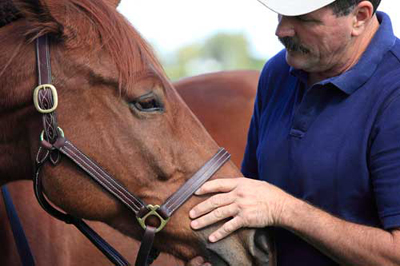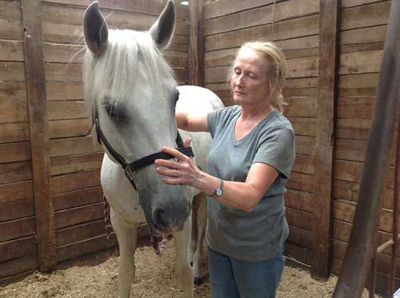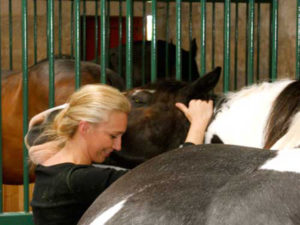Paying attention to equine body language may help prevent training and physical issues.
Does your horse throw his head when you ask him to do something, or cause drama when you put on his bridle? This sort of body language may be his way of telling you there’s something else going on.
Is it behavioral or physical?
There are various levels of behavioral issues that come up in training or riding that may affect the performance of your horse. Some behavioral problems such as trailer loading, spookiness or bolting for the barn may be only that – behavioral issues that can be modified with training.
Other more subtle issues may have to do with differences in lateral movement such as bending, turning, spinning or lead changes, while others may have to do with the horse’s ability to use the hind end in stopping or collection, resistance to the bit, or an outright refusal when asked to do certain things. With these issues, there’s a possibility that the behavior might have to do with physical pain or discomfort, or the onset of this.
The head-shy horse
A common and obvious example would be the head-shy horse. In my experience, 95% of cases of head-shyness have associated pain and tension in the poll. This may be the result of direct trauma such as hitting the head or pulling back against being hard-tied, but more often is related to an issue or issues in another part of the body. Often pain in one part of the body can develop from a seemingly unrelated issue in another part. Commonly pain in the poll — especially in working horses – develops due to soreness in the front foot or lower leg, generally on the same side as the sore foot. Other problems such as dental issues, a sore back, or excessive pain in the sacral area are also related to pain in the poll. The head-shy horse may not only be telling you that something is bothering him upstairs, but may also be telling you that there’s another issue at hand (or foot) that you want to know about.
If left unnoticed or untreated, the primary issue that’s creating tension elsewhere in the body may eventually become a problem requiring veterinary treatment or long term attention. In this case, a thorough veterinary or dental exam may uncover hidden or chronic problems associated with the head-shyness. Once the primary issue is found and taken care of, some type of bodywork or therapy will help to release tension that has accumulated in the poll, and in other parts of the body that may have been compensating for the issue. In this way, the whole body is addressed. Following up with supplementing exercises, the owner can help to keep the horse’s poll and neck flexible, his head down, and hopefully put a smile back on his face.
Horses do things for a reason, and it pays for the owner or trainer to understand what that reason might be. Whether it’s a subtle difference in movement or something that’s creating a training challenge, by paying attention to what your horse’s body is telling you, you may be able to avoid training and physical issues with your horse.
Jim Masterson, Equine Bodywork Therapist for the 2006, 2008, 2010 and 2012 USEF Endurance Teams, and for equine athletes competing in FEI World Cup, Pan American and World Equestrian Games competitions, teaches a unique method of equine bodywork to horse owners and therapists in which the practitioner learns to read and use the responses of the horse to touch, to release tension in key junctions of the body that most affect performance. This is an effective and rewarding method of bodywork that anyone can use to improve performance, while at the same time opening new levels of communication and trust with the horse. Go to www.mastersonmethod.com for more information.











